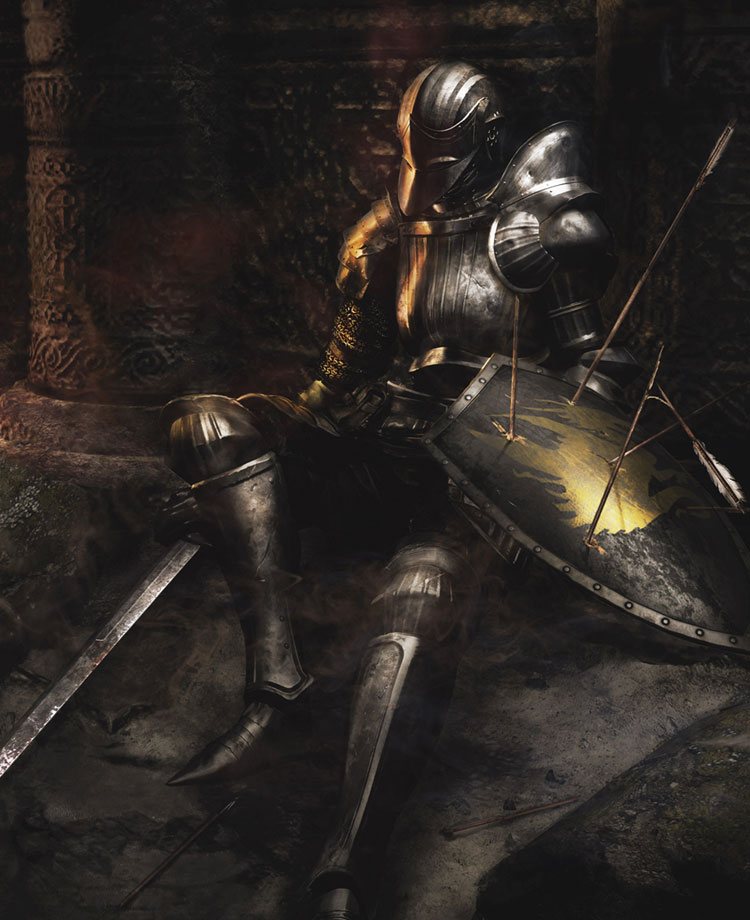For the 10th anniversary of Demon’s Souls, here’s my heretical take on enjoying this game: forget the lore.

credit: Sony Interactive Entertainment
A quality of the Souls series that is often praised is its old-school sensibilities. Usually this is meant to refer to its difficulty; in contrast to the game design philosophy of its contemporaries, (remember the big arrow in BioShock that told you where to go at all times?) Demon’s Souls seemed indifferent about whether or not the player should be able to finish the game. Along with the static positioning of enemies, this drew comparisons (at least from me) to Castlevania and other brutally hard NES era titles. But, I think this characterization is missing something that was a big part of the way I received games of that era – something that informed the way I would play Demon’s Souls, which would lead to it becoming a personal favorite of mine.
On a recent episode1 of the gaming podcast Retronauts, guest Gary Butterfield offered his idea of a “40-70-90” rule for game worldbuilding: to explain only 40% of the story leads the player to make unsupported conjecture, to explain 90% (or even 100%) of the story is no fun, and 70% is a narrative Goldilocks Zone that leaves just enough mystery to be tantilizing. Generally, people seem to agree with this idea. There’s an abundance of wiki pages and YouTube explainers piecing together the games’ lore from item flavortext and NPC dialogue. The elusiveness of a more explicit story is one of the qualities of the series that makes it so enduringly popular.
Despite that, I disagree with Gary’s thesis. Not because I think there’s a right way to receive these games – there isn’t – but because I’m so naturally able to play them in the same way that I played games on the NES. I’m not sure if my specific appreciation for the games is unique, but I do think that it’s worth offering as an option.
The NES was my first gaming console, but I didn’t receive one until 1995 – a full decade after its release, a generation behind, and just a year shy of the N64’s debut. This meant that games were acquired secondhand, usually from yard sales, and always without an instruction manual. Coupled with me being 5 years old and having no knowledge of Nintendo Power (let alone access to back issues), most of the games I spent my childhood playing existed in a context vacuum. By necessity, I used a lot of imagination to add that missing context to my games, and eventually I had built up a small personal mythos for many of them: what the world was all about, who the characters and enemies were, and how they fit into what (I thought) was going on.
When you’re a kid, you have no realistic intuition for the hardware limitations games are up against, especially those of the 8-bit era. When Pokémon became a hit in the late 90s, my friends and I trawled through countless Maxpages sites for secrets and cheat codes, often swallowing the most outlandish claims as truth. It was always something like, talk to this NPC a hundred times, and he’ll eventually get bored and give you [some made up item]! There was no short supply of rumors and other kids at school claiming to have access to secret or forbidden knowledge. This isn’t uniquely a quality of older games, but it’s one that I associate with them because I was the right age for it when I was playing them.
When I got my hands on Demon’s Souls in 2009, I discovered that the game was extremely obtuse with its storytelling. Other than an initial cutscene to set the stage, you really only had the level design and the cryptic, unreliable musings from the NPCs you would sometimes meet. As I dug my teeth into the game, I also realized that there actually were very well-hidden secrets, some of which might be discovered accidentally, while others required reading a wiki or a walkthrough to properly activate. You could play through the game several times and never meet certain NPCs, discover certain areas of a level, or divine the purpose of a curious item. The crowning example of this is the Tendency system, wherein the game’s content may change in very specific ways without ever notifying the player. A locked door may suddenly unlock because of a change in character or world tendency, new enemies may appear in places where there were previously none, or a ladder might materialize and lead the player to a previously unknown room. To further complicate things, as well as add another layer of mystery, the game servers would slightly shift the values for this stat with each new day, making it extremely unpredictable and hard to manipulate. This was the kind of game those Geocities myth-makers described, in a way.
So, that’s what makes Demon’s Souls a spiritually old-school game, or at least for me it does. I wish these qualities had been embraced in the popular discussion about the game, but they’re admittedly more nebulous than the more obvious triumps of level design, mechanics, multiplayer, et cetera. But, if anyone has read this and not yet played one of these games, I implore you: forget the lore, and embrace the mystery.


